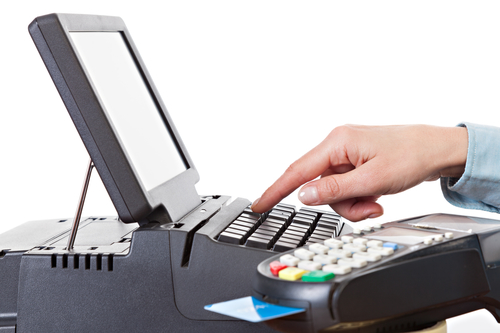You walk into a store and a biometric scanner is all set waiting to scan your eyes. Within seconds, it displays promotions based on your past purchases, gender and even age. It does not end there. As soon as you select your purchase, the biometric scanner takes your fingerprints or scans your eyes to charge your credit card. You may even walk out of the store without scanning any of your purchases because they all have Radio Frequency Identification Tags. That way, the retailers inventory gets deducted and tracked by the said RFID tags. You see an email notification with the store thanking you for your purchase and you know for sure, life has somewhat become what you only imagined 10 years ago.
The scenario above sounds every futuristic, but it not. If anything, it is already happening. The technologies used by retail giants slowly trickle down to POS systems designed for the future. In other words, prepare for the following emerging trends that will transform POS systems in massive way.
Biometrics
It is already in use in some parts of the world. It is all about identifying a person by measuring unique human characteristics so as to confirm identity. Today, all a cashier needs to do when logging into a POS system is to press his or her finger on a finger print scanner. The scanner then logs the cashier into a POS system solely based on the fingerprints it detects. This reduces theft and saves time. Errors can also be narrowed down to a specific cashier. That way, training needs can be easily identified. Soon, consumers will also be able to pay for goods using finger scans linked to their cards.
Radio Frequency Identification
Radio Frequency Identification or RFID, uses devices attached to goods that transmit data within seconds to an RFID receiver. It is an alternative to bar codes, which consumer more time. RFID steps in as an alternative mostly because of its high data capacity, no line of sight requirements and read/write capability. RFIDs can also be embedded within packages. Experts predict that RFIDs will be mostly used for POS mall checkouts. In other words, they will replace human cashiers with an automatic system that won’t need barcode scanning.
Self-Checkouts
Self-scanning or self-checkout essentially has the customer doing the work of a cashier. A customer can scan his or her own items, swipe cards and bag goods. The shopper then begins the checkout process by scanning items on a scanning device. The customer won’t be able to put additional items on a bag as the automated system will know how much a bag should weigh based on the goods a shopper has scanned. The shopper cannot also fool the system by scanning a cheap item like a package of popcorns with chocolate inside. The system will prompt the customer to remove the item and scan again.
Digital Signage
Retailers already used digital signage to convey promotion and advertise brands. It is an effective promotional tool as it allows retailers to change signs so as to discount an item that needs clearing out or identify a current promotion. It can be easily programmed based on factors such as the time of the year and the duration a promotion runs. Digital signage can be used in POS systems to inform consumers about specific products and at the same time influence their shopping patterns by capturing real time data.
Advanced CRM
‘Thank for choosing us’ is an old slant used by stores. This is changing though, thanks to advanced Customer Relationship Marketing. With advanced CRM, POS systems can ‘see’ that a customer has purchases a specific item. The system will then send a predefined email auto responder thanking the customer for the purchase. Within seven days, it will automatically send a follow up email asking the customer how the product is working.
